Abstract
This is the first anonymous unlinked seroprevalence study in Canada to use serum samples from newborns to determine the seroprevalence rate of human immunodeficiency virus (HIV) infection among childbearing women. Of the 68,808 samples tested 42 were confirmed as positive, for an overall crude seroprevalence rate of 6.1 per 10,000 live births (95% confidence interval [CI] 4.4 to 8.3), or 1 woman in 1638. Women who lived on Montreal island had an overall rate of 17.9 per 10,000 live births (95% CI 12.2 to 25.4), or 1 woman in 559. We observed a significant association between revenue index and seroprevalence; the rates were as high as 46.4 per 10,000 live births (95% CI 18.7 to 95.3), or 1 woman in 216, for Montreal island postal code areas with revenue indexes 20% or more below the provincial median. Extrapolation of the data suggested that 56 women with HIV infection gave birth to a live infant during 1989 in Quebec. Even though attempts to generalize the data from childbearing women to women of childbearing age have an inherent conservative bias, the results of our study suggest that 988 women (95% CI 713 to 1336) aged 15 to 44 years in Quebec had HIV infection in 1989. The actual number is likely substantially higher. The need for well-designed, creative interventions to prevent further HIV transmission to women is evident. Planning for the provision of medical and psychosocial services sensitive to specific needs of women who are already infected should start immediately.
Full text
PDF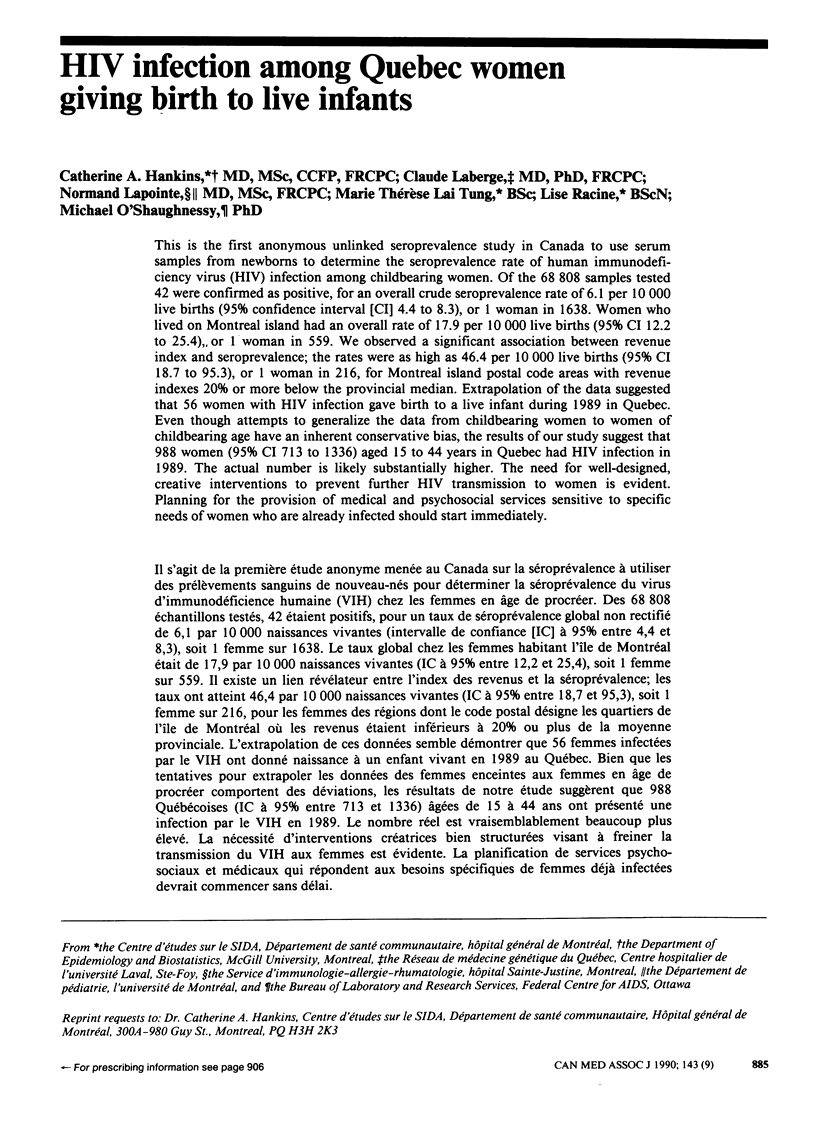
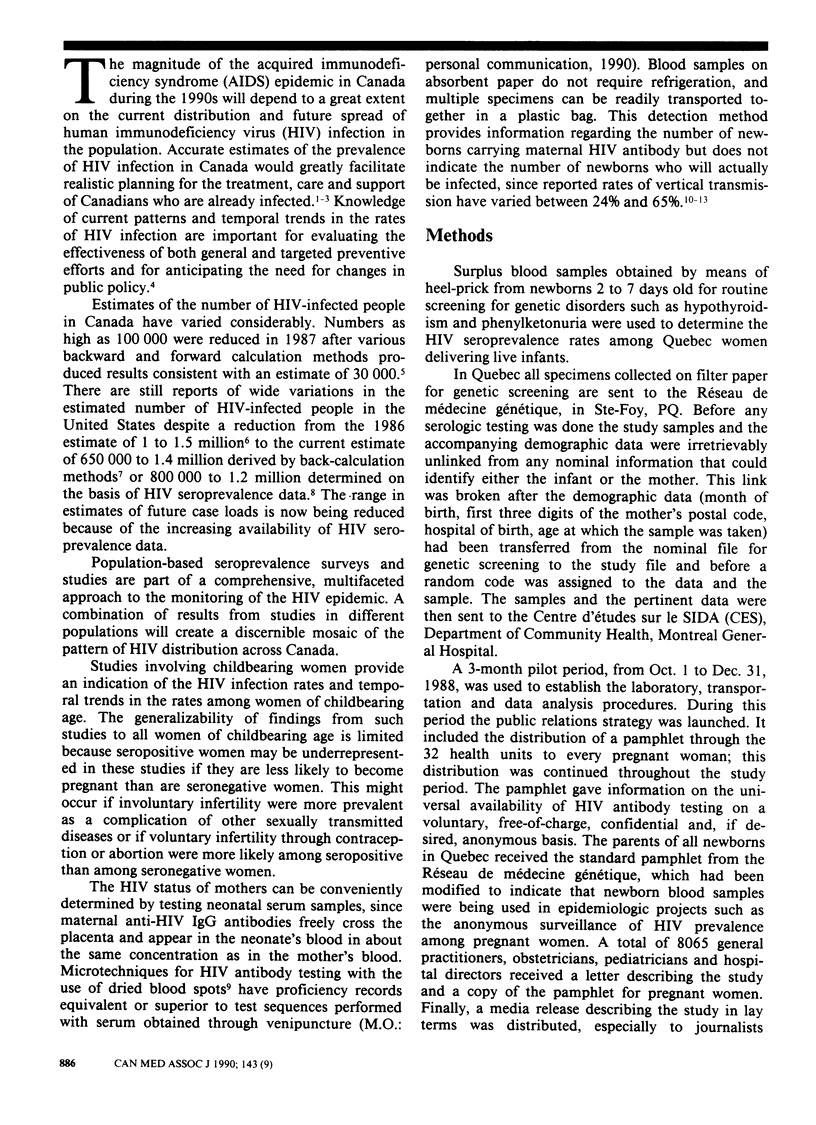
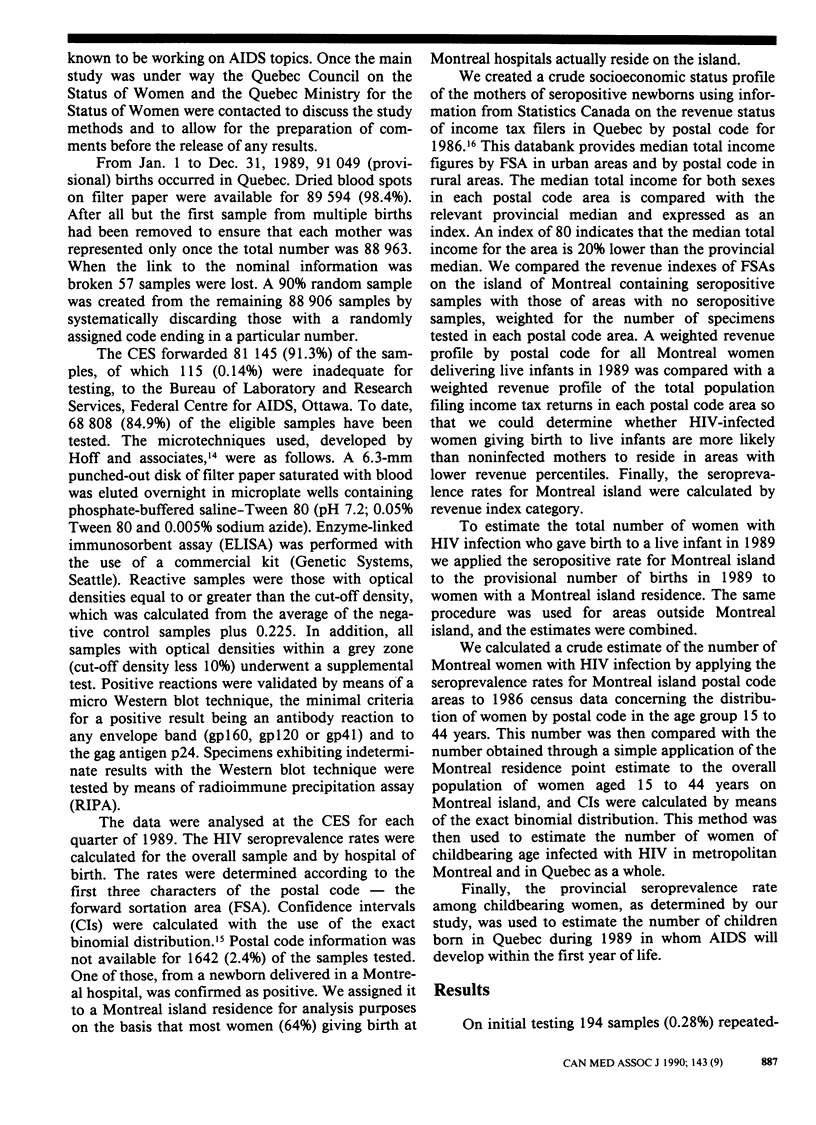
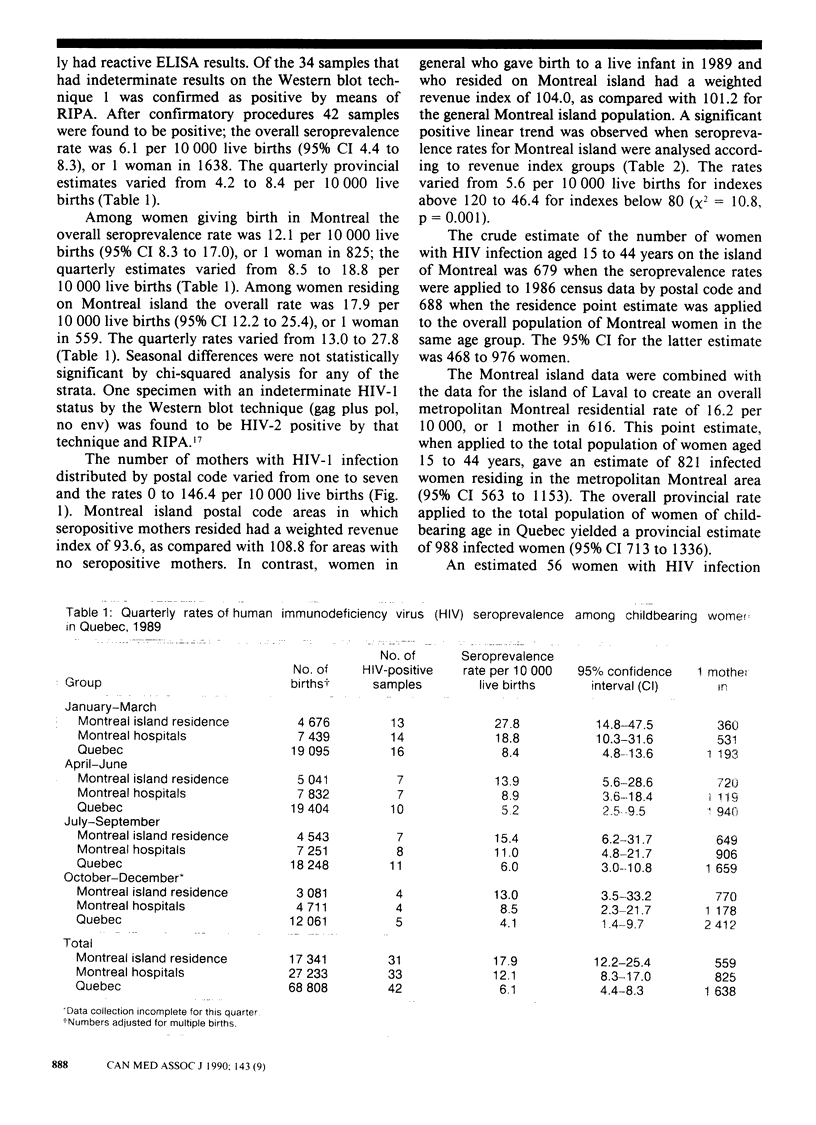
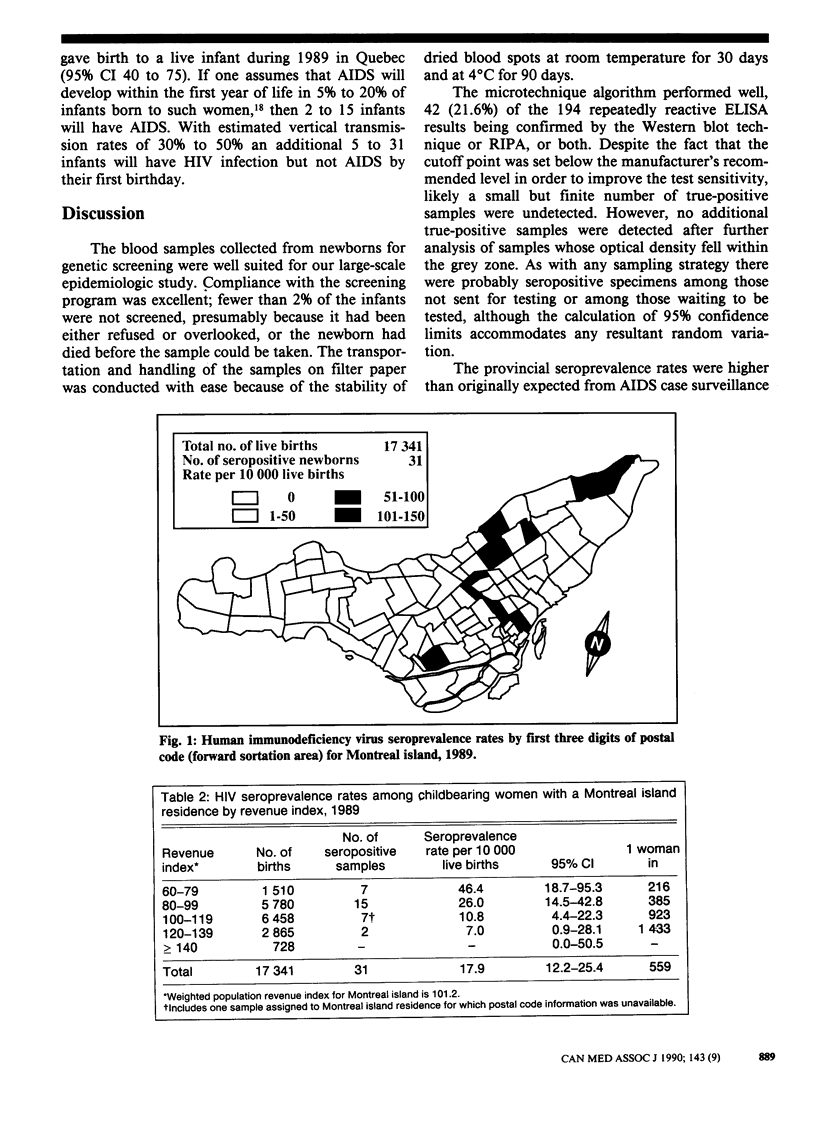

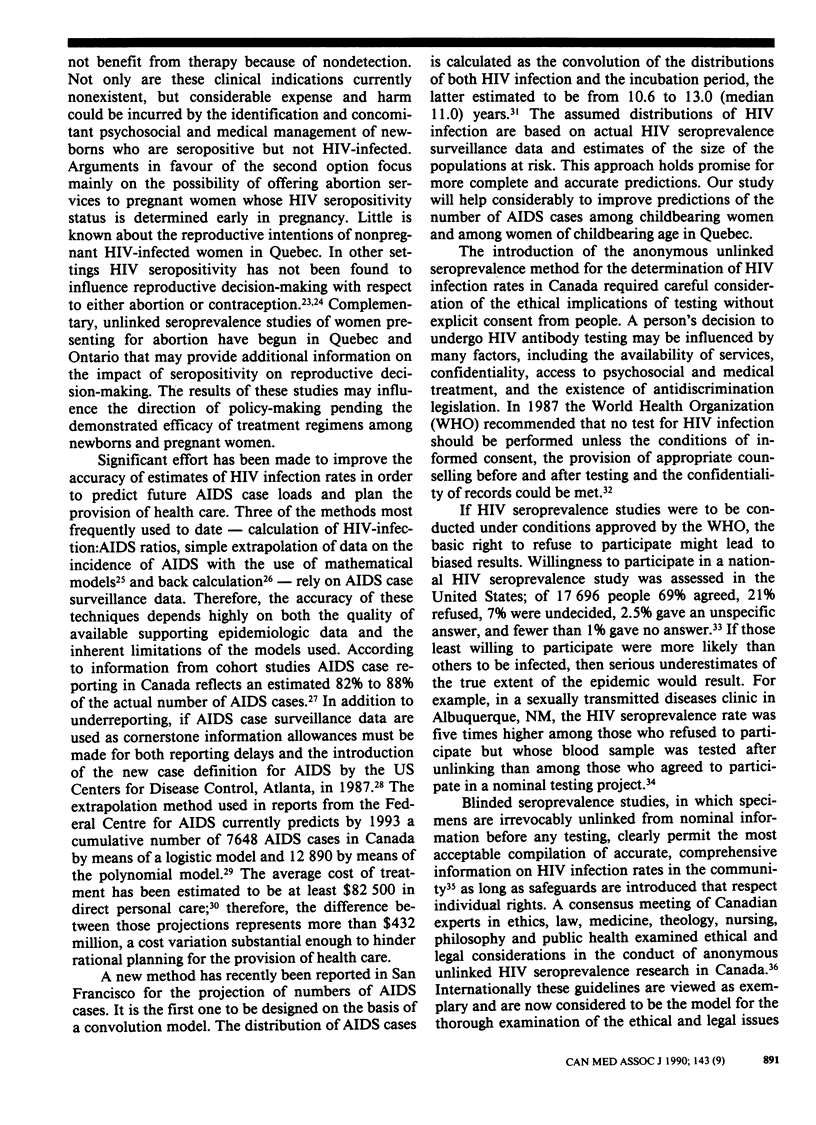
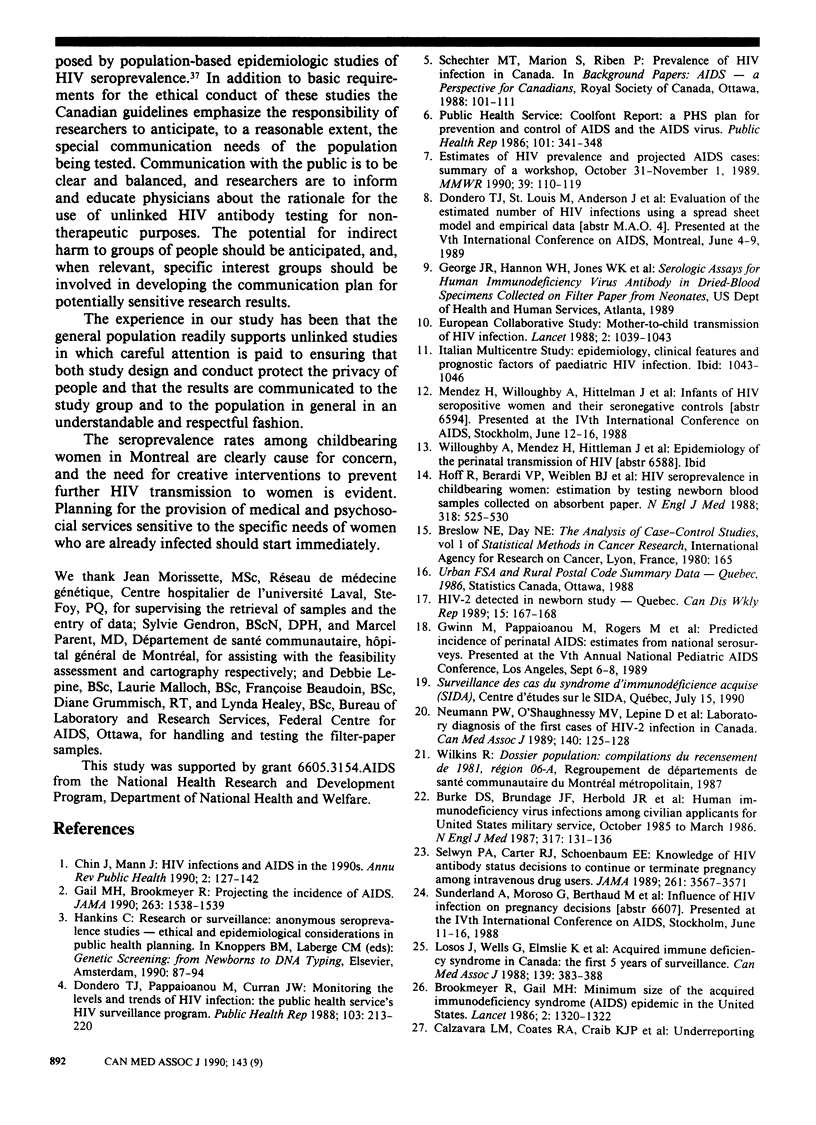
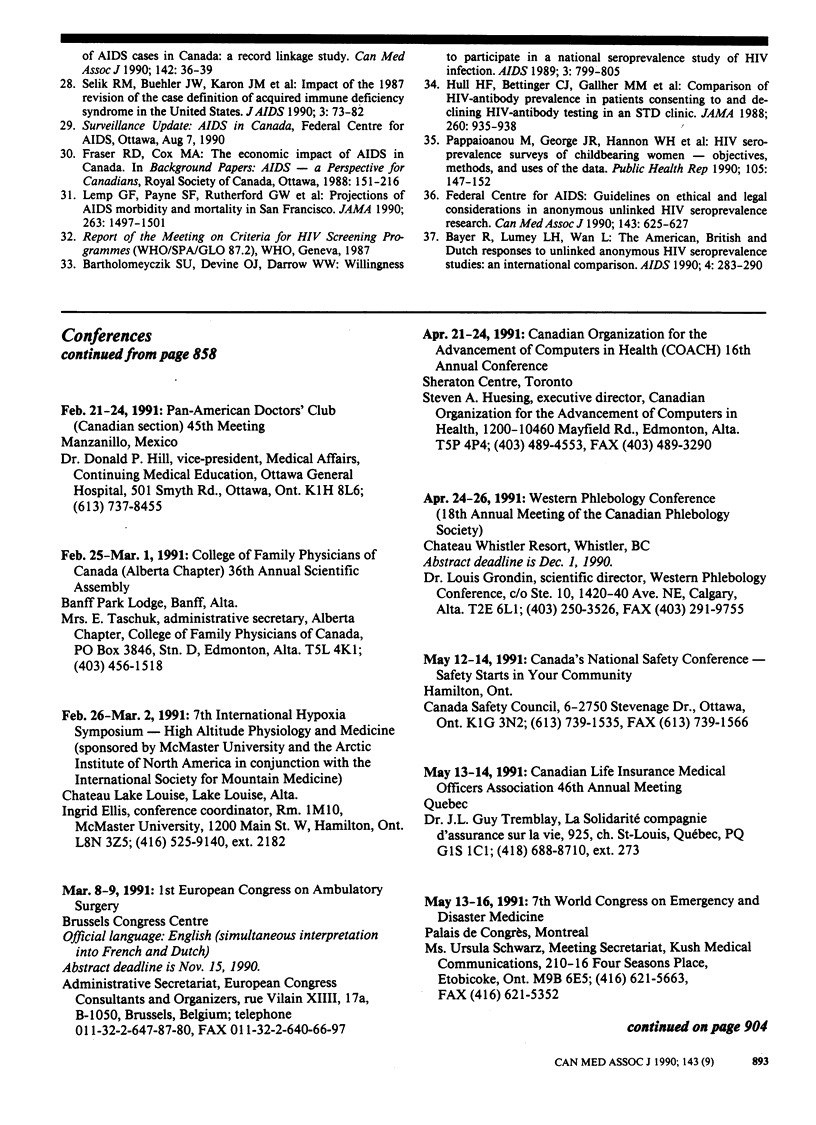
Selected References
These references are in PubMed. This may not be the complete list of references from this article.
- Bartholomeyczik S. U., Devine O. J., Darrow W. W. Willingness to participate in a national seroprevalence study of HIV infection. AIDS. 1989 Dec;3(12):799–805. doi: 10.1097/00002030-198912000-00004. [DOI] [PubMed] [Google Scholar]
- Bayer R., Lumey L. H., Wan L. The American, British and Dutch responses to unlinked anonymous HIV seroprevalence studies: an international comparison. AIDS. 1990 Apr;4(4):283–290. doi: 10.1097/00002030-199004000-00001. [DOI] [PubMed] [Google Scholar]
- Brookmeyer R., Gail M. H. Minimum size of the acquired immunodeficiency syndrome (AIDS) epidemic in the United States. Lancet. 1986 Dec 6;2(8519):1320–1322. doi: 10.1016/s0140-6736(86)91444-3. [DOI] [PubMed] [Google Scholar]
- Burke D. S., Brundage J. F., Herbold J. R., Berner W., Gardner L. I., Gunzenhauser J. D., Voskovitch J., Redfield R. R. Human immunodeficiency virus infections among civilian applicants for United States military service, October 1985 to March 1986. Demographic factors associated with seropositivity. N Engl J Med. 1987 Jul 16;317(3):131–136. doi: 10.1056/NEJM198707163170302. [DOI] [PubMed] [Google Scholar]
- Calzavara L. M., Coates R. A., Craib K. J., Schechter M. T., Le T. N., Nault P. L., Elmslie K. Underreporting of AIDS cases in Canada: a record linkage study. CMAJ. 1990 Jan 1;142(1):36–39. [PMC free article] [PubMed] [Google Scholar]
- Chin J., Mann J. M. HIV infections and AIDS in the 1990s. Annu Rev Public Health. 1990;11:127–142. doi: 10.1146/annurev.pu.11.050190.001015. [DOI] [PubMed] [Google Scholar]
- Dondero T. J., Jr, Pappaioanou M., Curran J. W. Monitoring the levels and trends of HIV infection: the Public Health Service's HIV surveillance program. Public Health Rep. 1988 May-Jun;103(3):213–220. [PMC free article] [PubMed] [Google Scholar]
- Gail M. H. Projecting the incidence of AIDS. JAMA. 1990 Mar 16;263(11):1538–1539. [PubMed] [Google Scholar]
- Hoff R., Berardi V. P., Weiblen B. J., Mahoney-Trout L., Mitchell M. L., Grady G. F. Seroprevalence of human immunodeficiency virus among childbearing women. Estimation by testing samples of blood from newborns. N Engl J Med. 1988 Mar 3;318(9):525–530. doi: 10.1056/NEJM198803033180901. [DOI] [PubMed] [Google Scholar]
- Hull H. F., Bettinger C. J., Gallaher M. M., Keller N. M., Wilson J., Mertz G. J. Comparison of HIV-antibody prevalence in patients consenting to and declining HIV-antibody testing in an STD clinic. JAMA. 1988 Aug 19;260(7):935–938. [PubMed] [Google Scholar]
- Lemp G. F., Payne S. F., Rutherford G. W., Hessol N. A., Winkelstein W., Jr, Wiley J. A., Moss A. R., Chaisson R. E., Chen R. T., Feigal D. W., Jr Projections of AIDS morbidity and mortality in San Francisco. JAMA. 1990 Mar 16;263(11):1497–1501. [PubMed] [Google Scholar]
- Losos J., Wells G., Elmslie K., Verveniotis G., Clayton A. J. Acquired immune deficiency syndrome in Canada: the first 5 years of surveillance. CMAJ. 1988 Sep 1;139(5):383–388. [PMC free article] [PubMed] [Google Scholar]
- Neumann P. W., O'Shaughnessy M. V., Lepine D., D'Souza I., Major C., McLaughlin B. Laboratory diagnosis of the first cases of HIV-2 infection in Canada. CMAJ. 1989 Jan 15;140(2):125–128. [PMC free article] [PubMed] [Google Scholar]
- Pappaioanou M., George J. R., Hannon W. H., Gwinn M., Dondero T. J., Jr, Grady G. F., Hoff R., Willoughby A. D., Wright A., Novello A. C. HIV seroprevalence surveys of childbearing women--objectives, methods, and uses of the data. Public Health Rep. 1990 Mar-Apr;105(2):147–152. [PMC free article] [PubMed] [Google Scholar]
- Selik R. M., Buehler J. W., Karon J. M., Chamberland M. E., Berkelman R. L. Impact of the 1987 revision of the case definition of acquired immune deficiency syndrome in the United States. J Acquir Immune Defic Syndr. 1990;3(1):73–82. [PubMed] [Google Scholar]
- Selwyn P. A., Carter R. J., Schoenbaum E. E., Robertson V. J., Klein R. S., Rogers M. F. Knowledge of HIV antibody status and decisions to continue or terminate pregnancy among intravenous drug users. JAMA. 1989 Jun 23;261(24):3567–3571. [PubMed] [Google Scholar]


